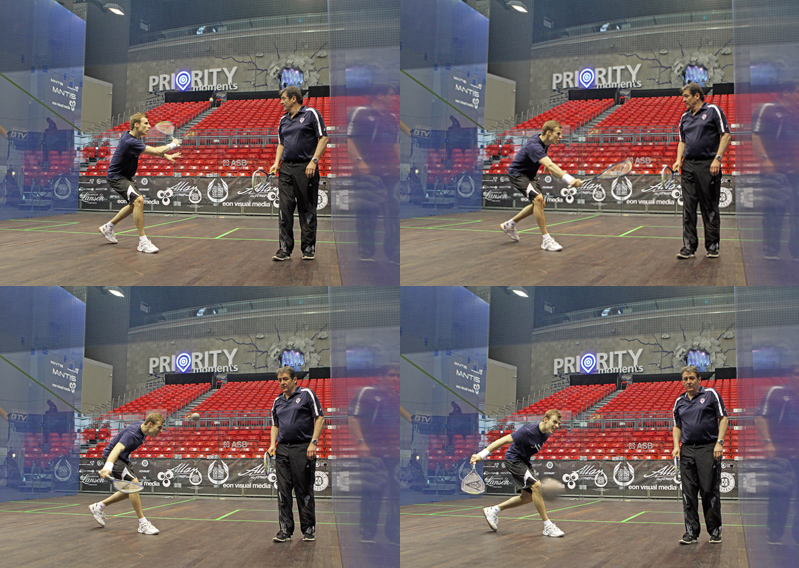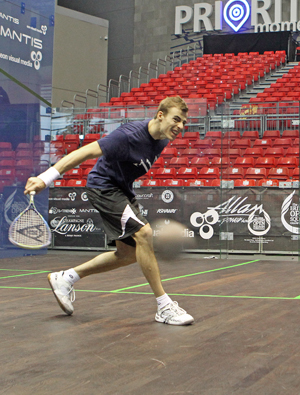By Scott Devoy, Head Professional, Merion Cricket Club and U.S. National Team Coach
You often hear about players with ‘good hands’ or ‘shot makers’ referring to players who take the ball short well, creating angles and using the front of the court to exploit their opponents. It’s a difficult skill to master and one that requires a lot of attention and practice.
3.0
Players at this level often play back in the court which means taking the ball short becomes more difficult. The use of ‘soft hands’ is a skill that takes time and experience; players who lack this will tend to use the boast a lot or a low hard ball that comes back into the court a long way—a result of playing back in the court and letting the ball get too close to you. Work on this with solo practice focusing on early racquet preparation and a shorter swing to gain control taking the ball short.
4.0
Players at this level are beginning to get control of the short ball, are more comfortable slowing the ball down and are able to use the front of the court to work their opponent and create openings. Use the short ball to move your opponent forward, thereby lengthening the court. The use of targets in the front court will help develop accuracy, and drills requiring you to take the ball short under increasing pressure will help get you through to the next level.
5.0
At the 5.0 level players can now accurately take the ball short at different speeds with the ability to create extreme amounts of pressure on their opponents by knowing when to attack. The ability to hit winners in the front court is now more prevalent; also creating angles to stretch the court means that these more experienced players can manipulate opponents and attack the space on a regular basis.
Playing the ball short requires hours of practice and patience. It is important to remember that hitting winners is not always the goal when taking the ball short. If you play the ball short, being consistently accurate, the winners will come!






